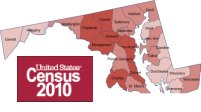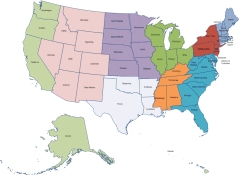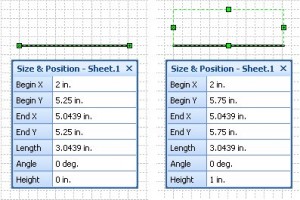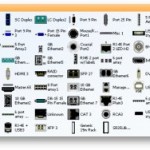![]()
 While it’s useful just to view geographic maps in Visio, the information becomes even more valuable when linked to data in Visio 2007. We’ll show you how to do this using Visimation MapShapes and you can use similar techniques to link data with any Visio 2007 diagram.
While it’s useful just to view geographic maps in Visio, the information becomes even more valuable when linked to data in Visio 2007. We’ll show you how to do this using Visimation MapShapes and you can use similar techniques to link data with any Visio 2007 diagram.
First, where do you find good data? Businesses that collect data about their operations or customers can link those data to Visio if they are stored in a structured data file like Excel, Access, SQL Server, or …Continue reading
 Map of United States grouped by US Census Region
Map of United States grouped by US Census Region 

